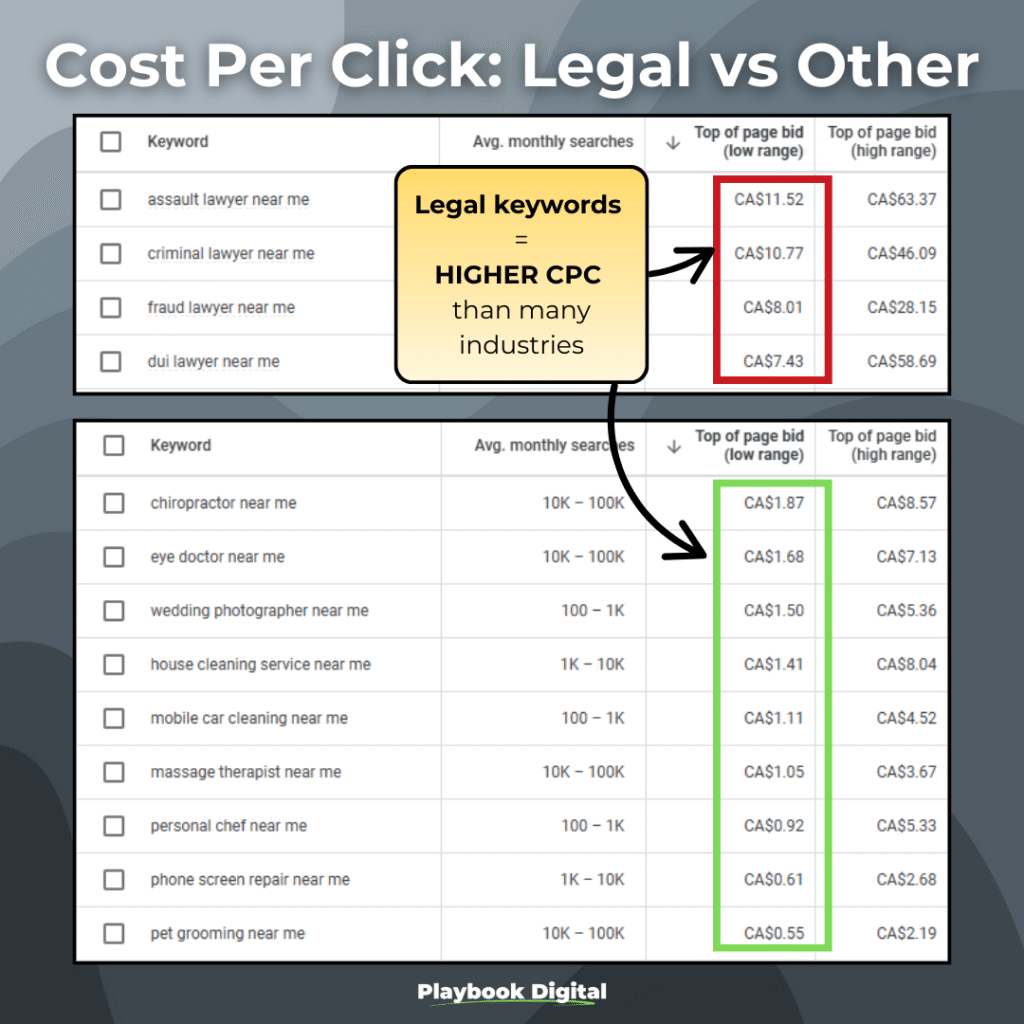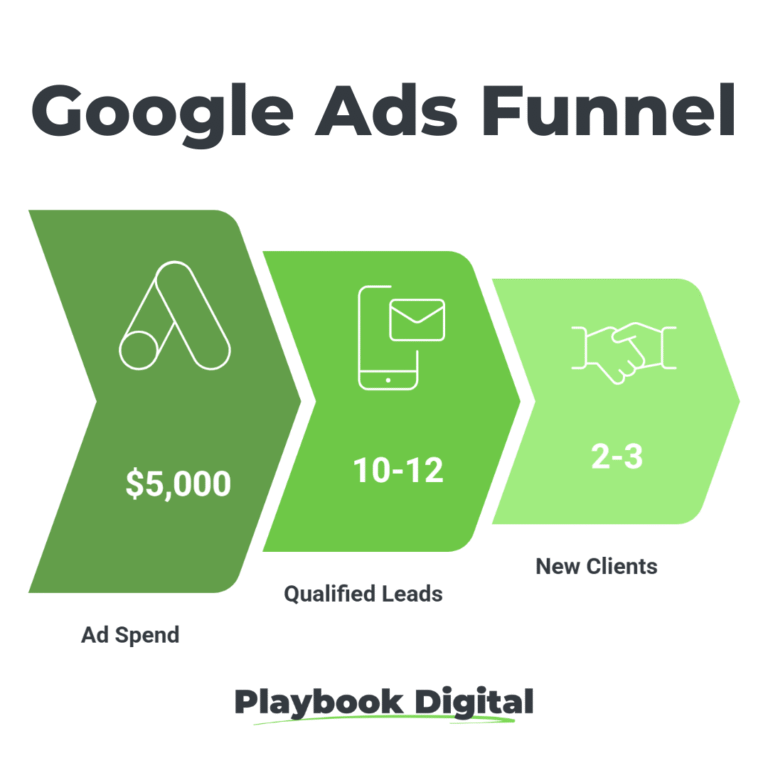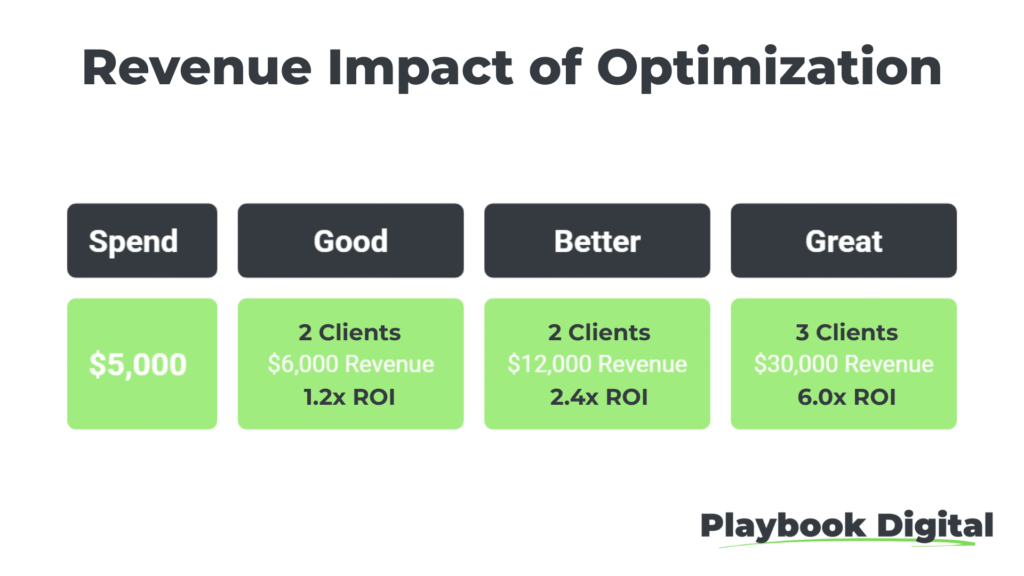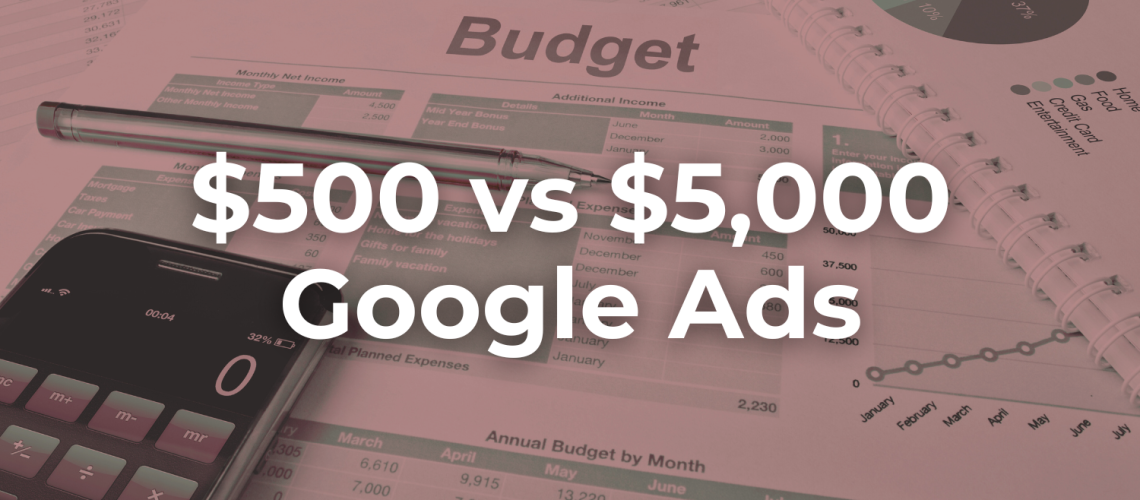TL;DR
A $500 Google Ads budget for a law firm is too small to generate consistent results. With legal keyword clicks often costing $25 to $50, that budget runs out after just a handful of clicks.
A $5,000 budget allows for broader targeting, multiple campaigns, and enough data to optimize a campaign, leading to steady lead flow and better ROI.
The real question is not “How little can I spend?” but “What’s a client worth to my firm?” If your average client brings $3,000 to $10,000 in revenue, a $5,000 campaign can pay for itself many times over with just one sale.
Why Does Budget Size Matter So Much in Law Firm Google Ads?
Legal advertising is one of the most competitive digital markets in the world. When someone searches “DUI lawyer near me” or “personal injury lawyer Oakville”, dozens of firms are bidding for that click. Because the potential value of a new client is so high, cost-per-click (CPC) rates can easily reach $50 or more. Why? Simply because law firms can afford to pay a hundreds to attract new clients because they charge those clients thousands of dollars per case.
What most business owners don’t realize is that when you decide on your advertising budget, you are also deciding;
- How many people actually see your ads.
- How often you show up compared to competitors.
- How much data you can collect to improve campaigns over time.
Without enough budget, even the smartest strategy will stall. You have to have a big enough budget to give yourself a chance to be seen.

What Does a $500 Google Ads Campaign Look Like for a Law Firm?
A $500 monthly budget may feel like a safe way to “try out” Google Ads, but a budget that small isn’t going to cut it when you are selling a high-priced service.
That amount of money just doesn’t give you enough firepower to compete in an industry where your competition happy to pay a premium to appear at the top of page one of Google. Running Google Ads on an underfunded budget is like playing football with only half your team on the field. Sure, you’re in the game – and you might make a couple of lucky plays – but you’re not setup to win consistently over time.
Underfunded campaign suffer a few common limitations.
Minimal Reach and Limited Visibility
With Cost Per Click rates (CPCs) averaging $25 to $50, a $500 budget buys you just 10–20 clicks per month. That’s barely enough to generate one phone call, let alone multiple client opportunities. Remember, each time that someone clicks on your Google Ad you pay money – even if they don’t fill out a form on your website. It takes many clicks to get one lead. When your budget is low, your ads may run for a few days (or hours!) before budget caps out, leaving you invisible for most searches.
Narrow Keyword Coverage
To avoid spreading yourself too think, you’ll likely be forced to pick generic keywords, such as “criminal lawyer near me.” The problem? Competitors are targeting dozens of variations, practice areas, and geographic terms. You’re fishing with one line while they’re casting a wide net. You already can’t afford to get a lot of clicks on a small budget, so spreading those clicks across multiple keywords only extends the time your ads take to learn and improve.
No Room for Optimization
Google Ads thrives on testing. Multiple ad variations, different headlines, different landing pages, call tracking. With only a handful of clicks, you simply don’t collect enough data to know what’s working and what’s not. You can’t tell what strategy is sound because you can’t get a statistically significant number of tests. Without enough data you can’t optimize, you can only guess.
Unpredictable Results
In some months, you might get lucky and land a high-value client. Other months, you’ll spend the entire $500 with zero calls. The volatility makes it impossible to manage your cashflow and build predictable growth. Law firms are like any other business, they need a steady flow of clients coming in to keep growing. You can’t build a business on feast or famine marketing.
Key Takeaway
A $500 budget is dabbling, not strategy. It may give you some exposure, but it won’t move the needle in a competitive market like legal. At best, it’s a testing ground. At worst, it’s wasted spend.
What Does a $5,000 Google Ads Campaign Look Like for a Law Firm?
Now, let’s flip the script. At $5,000 per month, you’re not just “trying ads”, you’re building a scalable growth engine. This level of investment allows you to compete where it matters, capture consistent leads, and optimize for long-term ROI.
Well-funded Google Ads campaigns perform better in four critical ways.
Broad Keyword Coverage Across Practice Areas
With more budget, you can target both high-intent keywords (“DUI lawyer Hamilton”) and research-driven searches (“What to do after a car accident claim”). You can also expand to cover multiple practice areas (criminal law, family law, real estate law) without spreading your spend too thin.
Now, instead of being forced to pick just one or two high-competition keywords and missing the vast majority of potential searches in your practice areas, you can bid on 50+ relevant keywords across the entire client journey. You can cover early research questions (“Do I need a lawyer for…”) to ready-to-hire searches (“Best personal injury attorney near me”). This comprehensive coverage means you’re visible at every stage of the decision process.
Multiple Campaigns Running in Parallel
Instead of one generic campaign, you can run separate ad groups for each service or location. That means your “Family Law” ads only show to family law searchers, while your “Criminal Defence” ads reach a completely different audience. And when your ads are more highly targeted relevance improves, click-through rates go up, and cost per lead goes down. That’s when Google Ads get fun.
The Granular Approach
- Campaign 1: Personal Injury (car accidents, slip & fall, medical malpractice)
- Campaign 2: Criminal Defense (DUI, assault, theft)
- Campaign 3: Family Law (divorce, custody, support)
- Campaign 4: Real Estate Law (closings, disputes, commercial)
Why Highly-Targeted Google Ads Matters
Google rewards relevance with lower costs and better ad positions. When someone searches “divorce lawyer,” they see ads specifically about divorce and not generic “law firm” messaging. This laser-focused approach typically improves click-through rates by 40-60% and reduces cost-per-click by 20-30%. These cost savings turn into an increase in leads without an increase in ad spend which, in turn, means higher ROI for you.
The ROI Multiplier Effect
Each campaign can be optimized independently. Your personal injury campaigns might perform best with testimonial-focused ads, while criminal defense responds better to urgency-driven messaging (“Free consultation within 24 hours”). You can now dial in each specific ad to get the most out of your ad dollars – but only if you know what you’re doing!
Geographic Targeting at Scale
Instead of being limited to one city or zip code, a $5,000 budget lets you cover multiple regions. For firms serving broader territories (e.g., all of Southern Ontario), this is critical to staying competitive in every market you serve.
Strategic Geographic Expansion
- Tier 1 Markets: Your primary city with premium bids on high-value keywords
- Tier 2 Markets: Surrounding suburbs with moderate bids on medium-competition terms
- Tier 3 Markets: Rural areas with lower bids on long-tail, location-specific keywords
Budget Allocation Strategy
You might spend $2,000 in Toronto (high competition, high case values), $1,500 across Hamilton/Burlington (moderate competition), and $1,500 covering smaller cities like Barrie, Kingston, and Guelph (lower competition but good case potential).
The Competitive Advantage
While smaller firms fight over scraps in one market, you’re dominating search results across multiple regions. This geographic diversification also protects you from local dependency or seasonal fluctuations.
Optimization and Testing Power
With hundreds of clicks per month, you gain enough volume to test different ad headlines, landing pages, and CTAs. You can A/B test different offers, promoting different features and benefits, or compare the quality of leads generated from specific keywords and quickly double down on what works. Here are some examples of Google Ads elements that you can test.
Google Ads Split Testing Suggestions
Ad Copy Variations
- Headlines: “Injured in an Accident?” vs. “Get the Compensation You Deserve”
- Descriptions: Benefit-focused vs. process-focused messaging
- CTAs: “Call Now” vs. “Free Case Review” vs. “Get Your Free Consultation”
Landing Page Elements
- Contact form length: Short (3 fields) vs. Longer (7 fields)
- Media type: Video testimonials vs. written reviews
- Lead magnets: (“Free Guide” vs. “Case Evaluation”)
- Conversion Goal: Phone vs. form submission emphasis
Bidding Strategies
- Time-of-day: Higher bids during business hours or during weekdays
- Device targeting: Mobile vs. desktop
- Audience layering: Past website visitors vs. cold traffic
More Date Means Faster Marketing Funnel Optimization
With 100 to 200+ clicks monthly, you can achieve statistical significance in tests within 3-4 weeks. A $500 campaign might take 6 to 9 months to gather enough data for meaningful insights by which time market conditions have likely changed and your cash flow has started to become a cause for concern.
Compound Improvements
Each successful test builds on the last. A 10% improvement in click-through rate, combined with a 15% boost in conversion rate, creates a 26.5% overall performance lift. Over 12 months, these compounding optimizations can double or triple your results.
How Many Leads Can You Expect at Each Level?
$500 Campaign: 0–1 leads per month, with unpredictable quality.
$5,000 Campaign: 10 to 12 leads per month, depending on practice area, market, and landing page performance.
The difference isn’t just the number of leads. The difference is the reliability. A $500 budget leaves you in a constant state of uncertainty, while $5,000 delivers enough volume to refine strategy and build a steady client pipeline.
What’s the ROI of a $5,000 Google Ads Budget?
The numbers tell the story.
Competitive Law Firm Metrics
- Average case value: $3,000–$10,000+
- Cost per lead: $400–$500
- Lead-to-client conversion rate: 20–30%

Monthly ROI Calculation
Your $5,000 investment generates approximately 10–12 qualified leads. With a conservative 25% conversion rate, that’s 2–3 new clients monthly.
Revenue Impact of Optimization
- Low end: 2 clients × $3,000 = $6,000 revenue (1.2x ROI)
- High end: 3 clients × $10,000 = $30,000 revenue (6x ROI)
- Realistic range: $12,000–$25,000 monthly revenue from a $5,000 ad spend

The Compounding ROI Effect
Unlike traditional advertising, Google Ads ROI improves over time. Month 1 might deliver 2.4x ROI, but by Month 6 (after continuous optimization) you could see 5–8x returns as your cost per lead drops and conversion rates improve.
Why Higher CPL Still Works
In competitive markets like personal injury or DUI defense, $400–$500 per lead reflects the high value of these cases. A single personal injury case can generate $25,000–$100,000+ in revenue, making even expensive leads profitable.
This is why successful law firms don’t ask “What’s the minimum budget we can get away with?” They ask “How much growth can we handle, and what budget gets us there?”
How Should a Law Firm Set Its Google Ads Budget?
Start with Revenue Goals, Not Budget Constraints
Step 1: Calculate Your Case Economics
- Average case value: What do you typically earn per client? (Include repeat business and referrals)
- Case capacity: How many new cases can you realistically handle monthly?
- Profit margins: What percentage of case revenue is actual profit?
Step 2: Work Backward from Growth Targets
If you want 10 new clients monthly:
- Lead requirement: 10 clients ÷ 25% conversion rate = 40 leads needed
- Budget requirement: 40 leads × $200 average cost per lead = $8,000 monthly budget
- Revenue projection: 10 clients × $5,000 average case value = $50,000 monthly revenue

Step 3: Factor in Market Reality
High-competition practice areas (personal injury, DUI) require larger budgets to compete effectively. Niche specialties (immigration, estate planning) often achieve results with smaller investments.
Geographic considerations: Major metropolitan markets demand premium budgets, while smaller cities offer more affordable opportunities.
Step 4: Commit to Optimization Time
Google Ads isn’t a sprint—it’s a marathon with exponential rewards. Plan for:
- Months 1–2: Data gathering and initial optimization
- Months 3–4: Performance improvements and scaling successful campaigns
- Months 5–6: Compound growth as all optimizations work together
The Bottom Line: Your budget should reflect your growth ambitions, not your comfort zone. The firms dominating search results treat Google Ads as a growth investment, not a marketing expense.
Final Takeaway
The difference between a $500 and a $5,000 Google Ads campaign for a law firm is the difference between “playing around with ads” and building a reliable growth engine.
If you’re spending $500, you’re testing the waters. If you’re spending $5,000, you’re competing for market share and building a pipeline that can fuel your firm for years. The real question isn’t “How little can I spend?” but “What’s the lifetime value of a new client, and how can I consistently acquire them?”
At Playbook Digital, we help law firms stop dabbling in digital ads and start building predictable, scalable client acquisition systems. If you’re ready to invest in growth, we’ll design a Google Ads strategy that fits your market, your practice areas, and your revenue goals.


